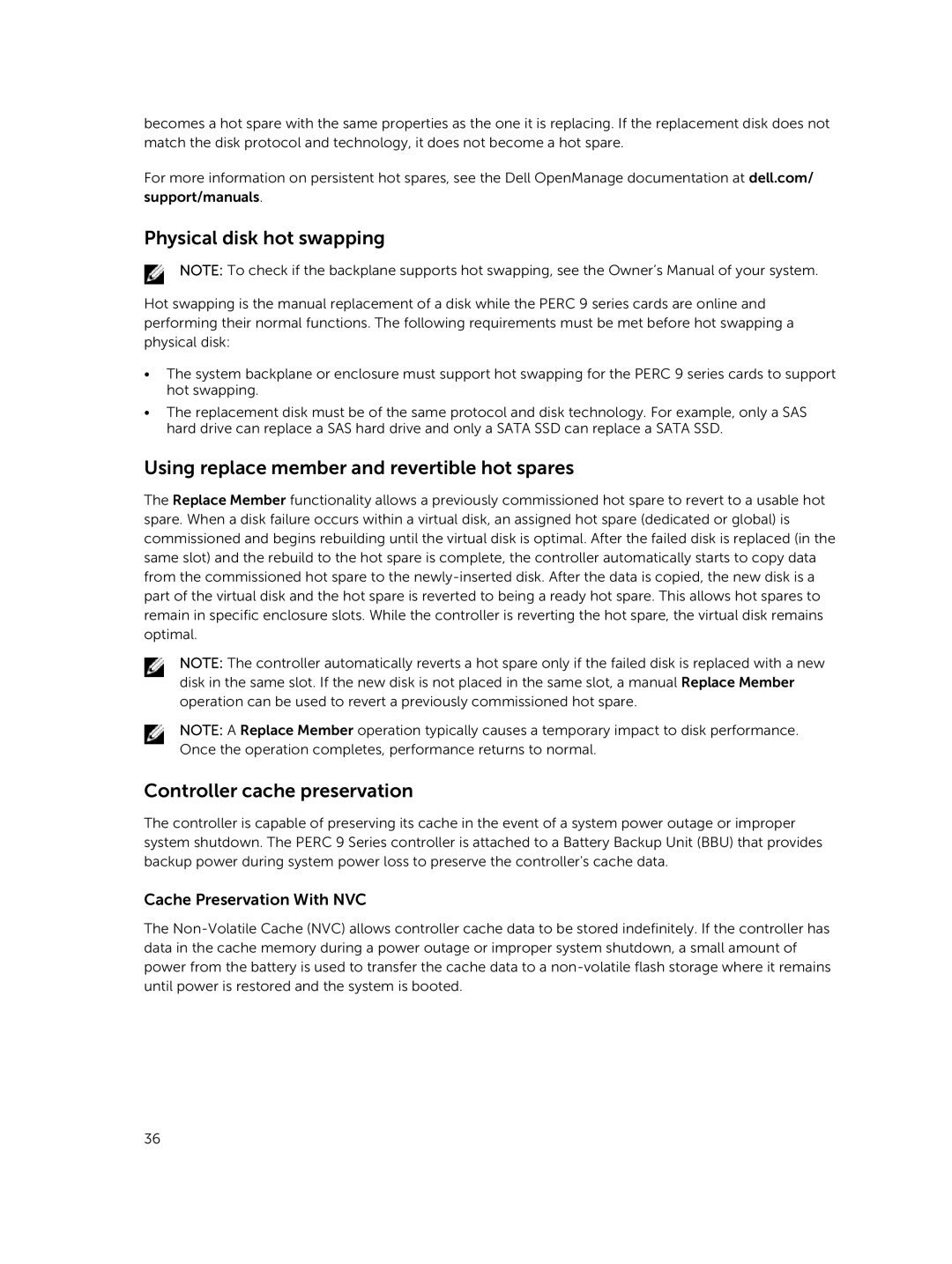becomes a hot spare with the same properties as the one it is replacing. If the replacement disk does not match the disk protocol and technology, it does not become a hot spare.
For more information on persistent hot spares, see the Dell OpenManage documentation at dell.com/ support/manuals.
Physical disk hot swapping
NOTE: To check if the backplane supports hot swapping, see the Owner’s Manual of your system.
Hot swapping is the manual replacement of a disk while the PERC 9 series cards are online and performing their normal functions. The following requirements must be met before hot swapping a physical disk:
•The system backplane or enclosure must support hot swapping for the PERC 9 series cards to support hot swapping.
•The replacement disk must be of the same protocol and disk technology. For example, only a SAS hard drive can replace a SAS hard drive and only a SATA SSD can replace a SATA SSD.
Using replace member and revertible hot spares
The Replace Member functionality allows a previously commissioned hot spare to revert to a usable hot spare. When a disk failure occurs within a virtual disk, an assigned hot spare (dedicated or global) is commissioned and begins rebuilding until the virtual disk is optimal. After the failed disk is replaced (in the same slot) and the rebuild to the hot spare is complete, the controller automatically starts to copy data from the commissioned hot spare to the
NOTE: The controller automatically reverts a hot spare only if the failed disk is replaced with a new disk in the same slot. If the new disk is not placed in the same slot, a manual Replace Member operation can be used to revert a previously commissioned hot spare.
NOTE: A Replace Member operation typically causes a temporary impact to disk performance. Once the operation completes, performance returns to normal.
Controller cache preservation
The controller is capable of preserving its cache in the event of a system power outage or improper system shutdown. The PERC 9 Series controller is attached to a Battery Backup Unit (BBU) that provides backup power during system power loss to preserve the controller's cache data.
Cache Preservation With NVC
The
36
